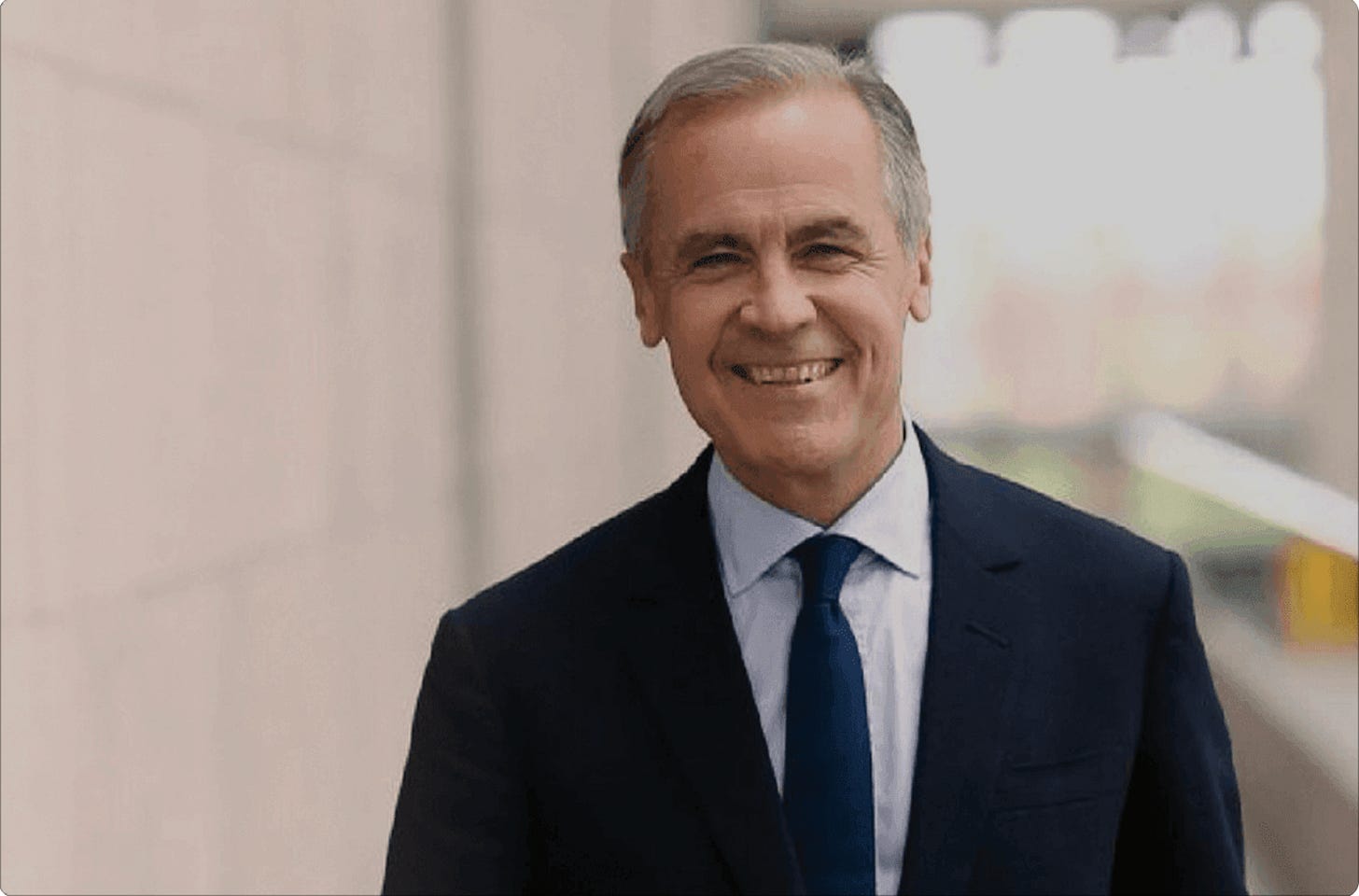Global Profiles - Mark Carney
Canada's Technocrat Who Bridges Two Worlds
Canada to the rescue? Technocrats are easily written off as boring policy wonks. But don’t put technocrat Mark Carney in that category. He represents exactly what the world needs right now.
In a time where populist strongmen dominate headlines, Carney embodies a better model. He is less a traditional politician and more a cultural bridge-builder. He understands that expertise, diplomacy, and collaboration are the route to success.
Mark Carney embodies Canadian culture that prizes pragmatic consensus-building, institutional trust, and quiet competence over dramatic leadership. In a nation where moderation is a virtue and expertise is respected, Carney's leadership style reflects deep cultural values: evidence-based decision-making, collaborative governance, and understated authority.
Beneath this measured exterior is an experienced leader who has dealt with the financial crises and now seeks to reshape Canada's economic future. His challenge isn't just political, it's cultural. And unless we understand his cultural perspective, we'll keep missing why institutional leadership might be democracy's best defense against authoritarian populism.
CULTURAL DIMENSIONS PROFILE
Universalism (Trompenaars): Carney believes rules, principles, and standards apply equally to everyone. His central banking career exemplifies this: monetary policy doesn't favor friends or punish enemies; it follows economic data and established frameworks. For Carney, institutional integrity matters more than political convenience.
Achievement (Trompenaars): Carney didn't inherit power or gain it through connections; he earned it through measurable results. Bank of Canada during the 2008 crisis; Bank of England through Brexit uncertainty; UN climate finance leadership. His credibility comes from what he's accomplished, not who he knows or where he was born.
Self-Transcendence(Schwartz): Carney's policy focus consistently prioritizes collective welfare over personal gain. This value drives his work on climate finance and global financial stability. It shows in policies aimed at helping ordinary Canadians. He could have stayed in lucrative private sector roles, but chose public service focused on societal benefit.
Low-Context Communication (Hall): Carney's communication style is explicit, data-driven, and precise. He speaks in facts, figures, and clear policy frameworks rather than emotional appeals or coded messages. This creates trust in financial markets but can seem dry in political contexts. His speeches read like economic briefings because that's exactly what they are: transparent transmission of complex information without hidden meanings.
Self-Direction vs. Security (Schwartz): Carney represents the tension between Security, his institutional, rule-based approach to governance, and Self-Direction, independent thinking on unconventional policy. He's conservative in method but progressive in vision, using established financial frameworks to address unprecedented global challenges. This perfectly captures the Canadian approach: steady institutions, bold ideas.
HORNBY'S ARCHETYPE PROFILE
North (Power-seeker): Carney exhibits clear North archetype traits through his idea-based decision-making and exercise of authority. His social ambition led him from Bank of Canada Governor to Bank of England Governor to Canadian Prime Minister. However, unlike extreme North types who reject others' ideas, Carney integrates expertise from multiple sources, reflecting a more evolved North expression.
West (Knowledge-seeker): Simultaneously, Carney embodies the West archetype's drive for understanding complex systems and sharing knowledge. His academic background (Harvard, Oxford), his detailed economic analyses, and his role as educator on climate finance risks demonstrate the West's systematic approach to knowledge acquisition and dissemination.
Mediator (Idea-based Self-awareness): Most significantly, Carney represents the integrative Mediator archetype who is capable of recognizing and integrating multiple idea-oriented drives. He has the ability to view situations from multiple viewpoints. He can both direct and execute work based on knowledge from others and self-acquired expertise.
This archetypal combination, North ambition + West knowledge-seeking + Mediator integration, creates a leader who seeks power through expertise rather than charisma, making him uniquely suited for technocratic leadership but potentially challenged in populist political environments.
Read more about the archetypes here
UNDERSTANDING CARNEY
To understand Carney is to recognize that he represents a distinctly Canadian approach to leadership: competence without arrogance, ambition without drama, and a global perspective rooted in Canadian values.
His leadership reflects Canada's position as a middle power, influential through expertise and relationship-building rather than dominance. Carney represents a third way between American individualism and Chinese collectivism.
Cultural Signature: Carney's communication style is quintessentially Canadian, measured, factual, and inclusive. He doesn't make bold declarations or personal attacks. He builds arguments through evidence and consensus, reasoned discourse over emotional appeals.
Key Accomplishments:
Successfully navigated Canada through the 2008 financial crisis as Bank of Canada Governor
Led the Bank of England through Brexit chaos and post-crisis recovery
Pioneered climate risk assessment in global finance as UN Special Envoy
Developed frameworks for sustainable finance that influenced global policy
Signature Tactics:
Institutional Authority: Builds credibility through expertise and track record rather than political positioning
Consensus Building: Seeks broad agreement through consultation and evidence-based arguments
Long-term Framing: Positions policies within larger historical and economic contexts
Quiet Competence: Demonstrates leadership through results rather than rhetoric
Carney's effectiveness stems from his ability to operate within Canadian cultural expectations while commanding international respect. He represents institutional liberalism at its best: competent, principled, and globally minded.
But his challenge is whether this approach can inspire in an era of populist politics. Can technocratic excellence overcome the cultural shift toward emotional, personality-driven leadership?
The answer may determine not just Carney's political future, but the viability of institutional liberalism.


